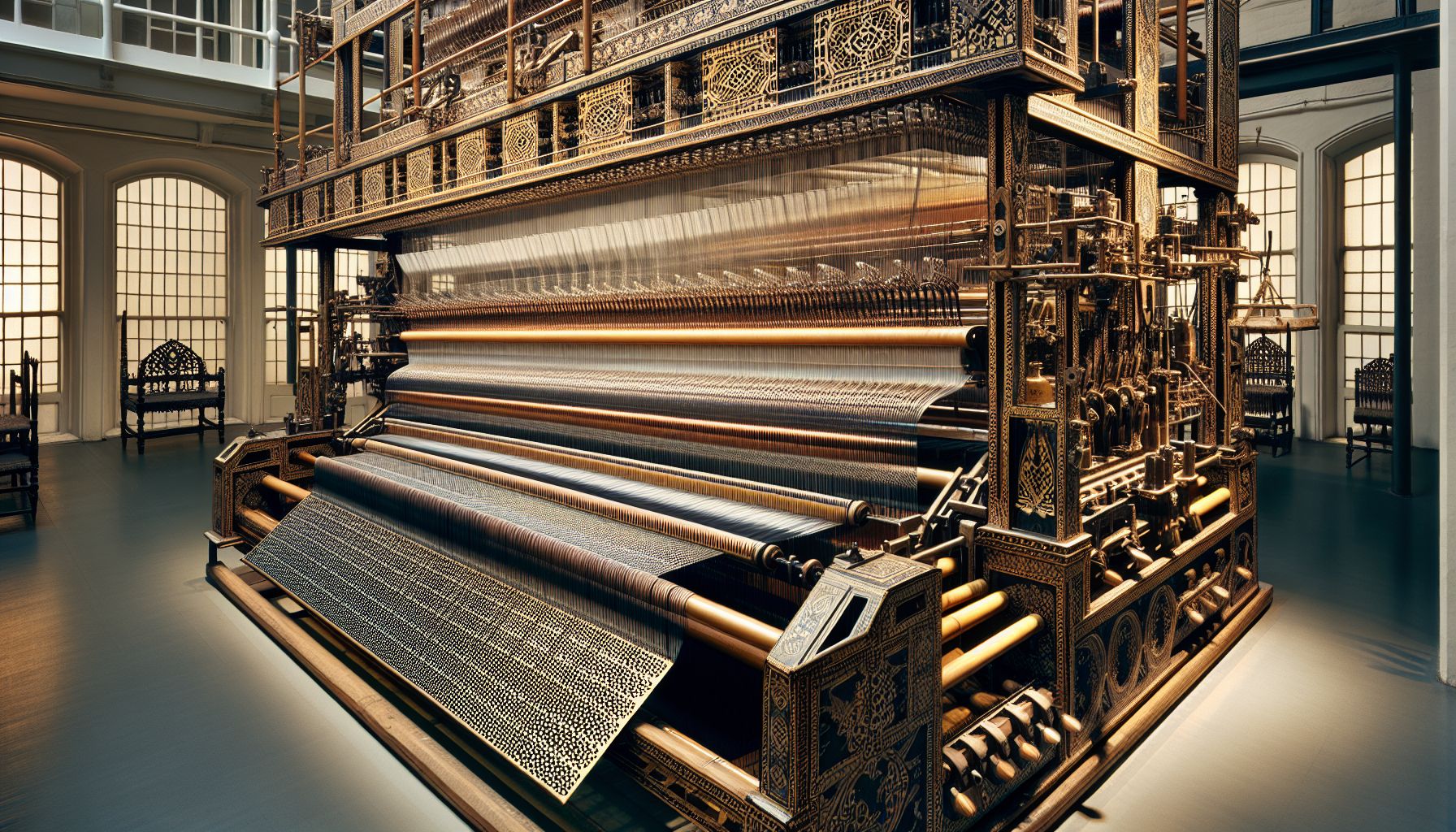📌 Let’s explore the topic in depth and see what insights we can uncover.
⚡ “Before computers and coding, there was the Jacquard loom, a piece of 19th-century technology that revolutionized not just weaving, but the entire technological world!”
Hello, dear readers! Today, we’re going to take a fascinating journey back in time. Back to the year 1804, to be precise. A time when the Industrial Revolution was in full swing, and the world was rapidly evolving and advancing. Among the many innovations of this era, one particular invention stands out – the Jacquard loom. This remarkable machine, with its use of punch cards, played a pivotal role in the textile industry, and ironically, set the foundation for the modern computer era. So, buckle up as we embark on an enlightening journey to discover the Jacquard loom and its intriguing use of punch cards. 🚂
🕰️ A Historical Overview

"Revolutionary Jacquard Loom: Punch Cards in 1804 Action"
The Jacquard loom was invented by Joseph-Marie Jacquard, a French weaver and merchant. Prior to the invention of the Jacquard loom, textile production was a labor-intensive process involving manual weaving of intricate patterns. The advent of the Jacquard loom revolutionized this process, making it more efficient and less labor-intensive.
The Genius of Joseph-Marie Jacquard
Joseph-Marie Jacquard, born into a family of weavers in Lyon, France, was not a stranger to the challenges of the textile industry. Frustrated with the inefficiencies and limitations of existing looms, Jacquard sought to create a machine that could automate the process and produce intricate patterns with less effort and time.
The Birth of the Jacquard Loom
In 1804, Jacquard’s dreams became a reality with the invention of the Jacquard loom. This machine was a significant improvement over the existing draw loom, which required two operators. The Jacquard loom, on the other hand, could be operated by a single individual and could produce more complex patterns.
⚙️ The Mechanics of the Jacquard Loom
At the heart of the Jacquard loom’s operation were the punch cards. These cards, made from stiff cardboard, had holes punched in them according to the pattern to be woven. When these cards were fed into the loom, the pattern was automatically reproduced on the fabric.
The Role of Punch Cards
Each punch card corresponded to one row of the design. The presence or absence of a hole in a card determined whether a particular thread would be raised or lowered. This, in essence, created the desired pattern. The sequence of cards, often strung together, dictated the entire design.
A Marvel of Mechanical Engineering
The Jacquard loom was a marvel of mechanical engineering for its time. The system of punch cards and hooks, which interacted with the threads, was a groundbreaking innovation that transformed the textile industry.
🖥️ The Jacquard Loom’s Legacy in Computing
Though the Jacquard loom was a revolutionary invention in the textile industry, its real legacy lies in the world of computing. The use of punch cards in the loom was, in fact, a form of binary coding, a concept that is central to modern computing.
Binary Coding and Punch Cards
In the context of the Jacquard loom, the presence of a hole in the punch card can be thought of as a ‘1’ and the absence as a ‘0’. This binary coding system was later used in early computing systems and is still the basis of digital computing today.
The Loom’s Influence on Early Computers
The punch card concept from the Jacquard loom was adopted by inventors of early computers. Charles Babbage, often referred to as the “father of the computer,” used the idea in his Analytical Engine, a general-purpose mechanical computer.
🎯 Impact and Influence of the Jacquard Loom
The Jacquard loom had a profound impact not only on the textile industry but also on the world of computing. Its use of punch cards to automate complex tasks was truly groundbreaking.
Transforming the Textile Industry
The Jacquard loom transformed the textile industry by automating the weaving process and making it possible to create intricate patterns with unprecedented ease and efficiency. It significantly reduced labor costs and increased production rates, contributing to the growth of the textile industry during the Industrial Revolution.
Setting the Stage for Modern Computing
Beyond textiles, the Jacquard loom set the stage for modern computing. The concept of using punch cards as a form of binary coding was a precursor to the digital age. Indeed, without Jacquard’s ingenious invention, the world of computing as we know it might not exist.
🧭 Conclusion
The tale of the Jacquard loom is a fascinating intersection of textiles and technology. This humble loom, with its punch cards and hooks, revolutionized the textile industry and laid the groundwork for the digital revolution. 📌 In fact, a testament to the genius of Joseph-Marie Jacquard and a shining example of how innovation can transcend industries and epochs. So, the next time you admire a beautiful piece of woven fabric or use your digital device, remember the Jacquard loom, and marvel at the interconnected threads of innovation that bind our world together. 🌐
🚀 Curious about the future? Stick around for more discoveries ahead!
